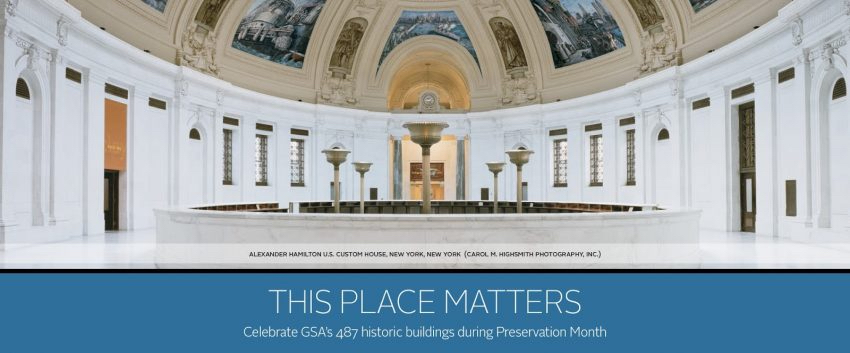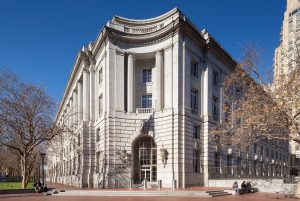
GSA Commemorates Preservation Month 2017
Post filed in: Courthouses | Historic Preservation | Public Buildings Service
During Preservation Month each May, GSA celebrates our historic buildings and the important ongoing roles they play in the growth of our nation. These 487 courthouses, laboratories, agency headquarters, inspection stations, office buildings, and custom houses—just to name a few—form the mission critical housing infrastructure for civilian federal agencies.
Historic preservation is flexible and forward thinking. A dual fluency in innovation and sound stewardship is key to putting our 19th and 20th century buildings to work for 21st century clients who have varied needs and diverse charges. From the introduction of base isolators to protect Pioneer Courthouse in Portland, Ore., from seismic damage in the event of an earthquake, to the transformation of the Wayne Aspinall Federal Building & U.S. Courthouse in Grand Junction, Co., into our first target net zero energy building, GSA's preservation team has continuously modernized our oldest assets into current-day superstars.
In its commemoration of the 50th anniversary of the National Historic Preservation Act (NHPA) last year, the Advisory Council on Historic Preservation (ACHP) initiated a series of "Section 106 Success Stories" recognizing federal agency projects that used public consultation (defined under Section 106 of the NHPA) to improve federal planning, protect important places and promote awareness of the benefits of historic preservation in communities across the country. We are proud that ACHP highlighted nine GSA projects as such successes. So far these stories highlight achievements in eight GSA regions, from the discoveries of the African Burial Ground in New York City and Clara Barton's Missing Soldiers Office in Washington, D.C., to moving the Gay Head Lighthouse in Aquinnah, Mass., to rehabilitating the U.S. Custom House in Philadelphia.

The latest story recognizes GSA's reinvestment in the rehabilitation of the Federal Building at 50 United Nations Plaza in San Francisco. Designed by Arthur Brown Jr., the 1934-1936 building was considered for disposal before a GSA-commissioned study determined it could be modernized to serve as the headquarters for the Pacific Rim Region and other federal agencies. The project conserved the building's historic features while transforming modern workspaces. It made use of the building's historic climate-control systems, at the same time as it introduced energy efficient glass and photovoltaic rooftop units to create a cutting-edge passive ventilation system.

 U.S. General Services Administration
U.S. General Services Administration
